
The E-type hard-tops were produced at Jaguar’s Radford works in the plant which, for a time, also made glassfibre bodies for the Daimler SP250 sports car.
‘To say that the history of automobilism is that of its clubs is nearer the literal truth than a lapse into exaggeration.’
Charles L. Freeston in Motors and Motor-Driving, 1902
The enjoyment of restoring and maintaining any old car is, to a great extent, conditioned by the availability of spare parts. As far as the E-type is concerned, the earliest example was built back in 1961, so can you expect to obtain parts for what is now a relatively old car? The answer is an unequivocal ‘yes’. One of the beneficial side effects of the recent escalation in E-type prices is that, in the main, the supply of spare parts is no longer a problem with the model. Having said that, there are some items that may prove to be a little tricky to obtain and may require some diligence to track down.
Let’s start with mechanical components, which have always tended to be in the best supply. These should be readily obtainable from specialist suppliers and it is even worth trying well established Jaguar dealers for such items as decoke sets, valves and hardworking parts like brake pads and discs, steering joints and clutch plates. This applies particularly to the V12-powered Series III cars, which were only discontinued in 1975.
The only item on the earlier cars that might prove to be tricky to obtain is an overhaul kit for the Dunlop bellows type brake servo on the 3.8-litre models though some detective work on your part will probably be able to locate one. The difficulty is that the Lockheed servo fitted to the subsequent 4.2-litre cars was much more efficient than the Dunlop unit, which required considerably more pedal pressure to bring the car to a halt. Here is an instance when you will have to decide whether you essentially want your E-type to drive, or have your eyes on concours competitions. In the latter instance, the accent is very much on originality, so if that is your preference, you’ll have to opt for the Dunlop servo, despite its shortcomings.
You’ll be faced with a similar predicament with the submersible petrol pump of the 3.8. This wasn’t a particularly successful unit and was replaced by the externally-mounted pump of the 4.2. Many 3.8-litre owners have converted their cars to the latter pump and as it is usually positioned out of sight, you might get away with this modification, unless the concours judge happens to be particularly eagle-eyed!

The E-type hard-tops were produced at Jaguar’s Radford works in the plant which, for a time, also made glassfibre bodies for the Daimler SP250 sports car.
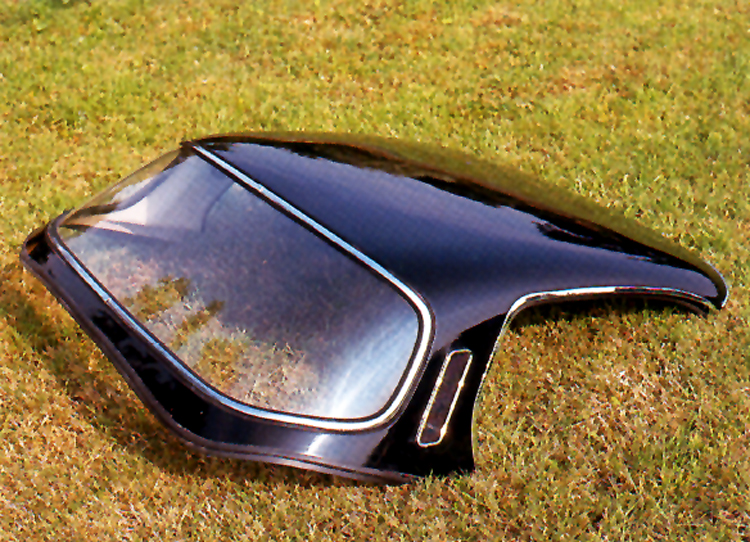
A large rear window has always been an attribute of the hard-top E-type. This one is for a Series III car. They are, alas, only available second-hand and command high prices.

Similarly, a complete tool-kit is a sought-after objective. This one comes from a 1964 Series I E-type, though the material used on the Series II cars was of poorer quality.
From mechanical components, we come to body parts. These were the sort of items that used to hang around in Jaguar agents’ spares stores for a time after a particular model went out of production, but then suddenly disappeared. Today, with very few exceptions, you can obtain practically every panel for the roadster and most for the fixed-head coupe. The exceptions are the roof and rear door for the latter and the absence of these important parts have resulted in some derelict coupes being rebuilt as roadsters. You have been warned! A word of caution about replacement body panels. Don’t imagine that you can buy the part, and then immediately fit it to the car. However good, it will probably require some hand fitting and some careful welding which, in truth, is really a job for the professional.
A perfect illustration of this state of affairs is that replacement bonnets available for all E-types, apart from the Series I½, can even take a professional a good week to fit to the car. The reason is that the bonnet/wing assembly is not a single pressing but is made up of a number of them, so the alignment of the individual part in relation to that of its neighbour has to be resolved before the unit as a whole can be offered up to the car. But in general terms, the availability of such items does mean that the days of the badly rusted E-type having to be scrapped – because of the absence of body parts – is now over.
This bringing us to what used to be the trickiest of replacement items: those of trim parts. That means interior items like seats and door coverings and body trim parts such as radiator grilles, badges and headlamp surrounds. Once again the specialist manufacturers have done E-type owners proud and most items are available. Such is the ever changing state of spares availability that a long unobtainable item, the moulding on the surround of the fixed head coupe’s rear door, which is a plastic rather than rubber material, is now available. It is details like this one that puts the right finishing touch to any good restoration.
As far as obtaining these parts is concerned, you’ll find no shortage of firms advertising in the specialist press but your best guide is to talk to other enthusiasts to discover which are the most satisfactory companies, and the ones which offer the most competitively priced spares.
Just three established specialist suppliers which have a good selection of E-type parts are:
FB Components,
35–41 Edgeware Road, Marston,
Oxford OX3 OUA.
Norman Motors,
100 Mill Hill,
London NW6.
Martin Robey Sales,
Camp Hill Industrial Estate,
Pool Road,
Nuneaton CV10 9AE.
Robey also restore E-types, as do:
XK Engineering of Unit,
Netherwood Industrial Estate,
Radcliffe Road,
Atherstone CV9 3NX.
Colin Ford’s C.F. Autos,
5 South Road, Erith,
Kent.
C.F. Autos have just completed the renovation of Practical Classics’ fixed-head E-type.
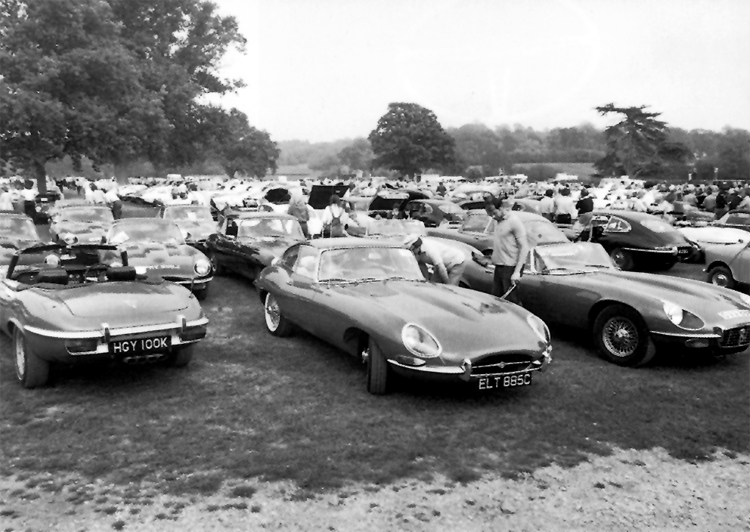
There is no better way of getting to know the E-type than to attend a Jaguar rally and concours, such as this one.
Yet another, and extremely important source and repository of information on spare parts, is the Jaguar car clubs. This is where joining a club is so important because you will not only be able to talk to fellow members about the best parts’ sources but some clubs also have an active spares department which can also initiate the remanufacture of parts. So if you do decide to join the ranks of E-type owners, I would consider it absolutely essential to join one of the many Jaguar clubs.
Britain has three Jaguar clubs at present, the largest of which is the Jaguar Drivers’ Club (JDC), which has about 12,500 members. The JDC is the spiritual successor of the pre-war SS Car Club which began life back in 1934. A national event was instigated in the following year, appropriately, at SS’s Blackpool birth place though the day was clouded by the disappearance of the club’s founder, C Moxon Cook, who departed with the members’ money – William Lyons being left to pick up the bill at the Imperial Hotel. Not surprisingly at this time Lyons was all for scrapping the club, and publicity chief Bill Rankin was given the choice of forgetting about it, or running it himself. Manfully he decided to carry on and the SS club continued with, albeit unofficial factory involvement, until the outbreak of the Second World War.

Original E-type sales brochures can be obtained from specialist dealers, at a price, while modern reprints are also available.
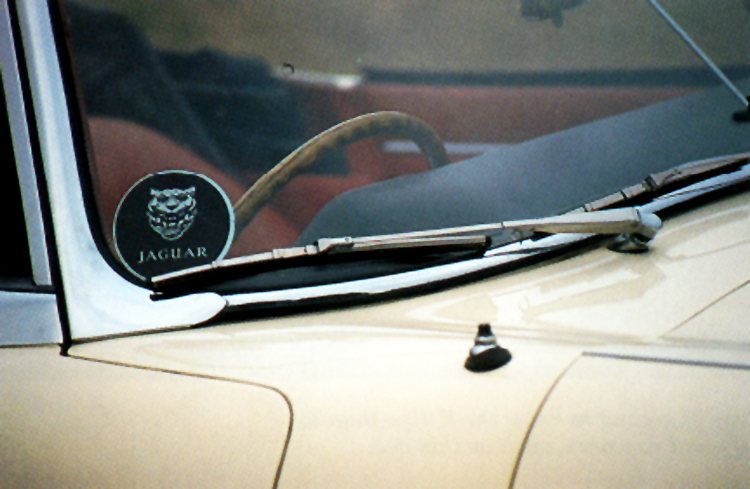
The precise alignment of the body panels on an E-type, as in this case, is both cosmetically and structurally important.
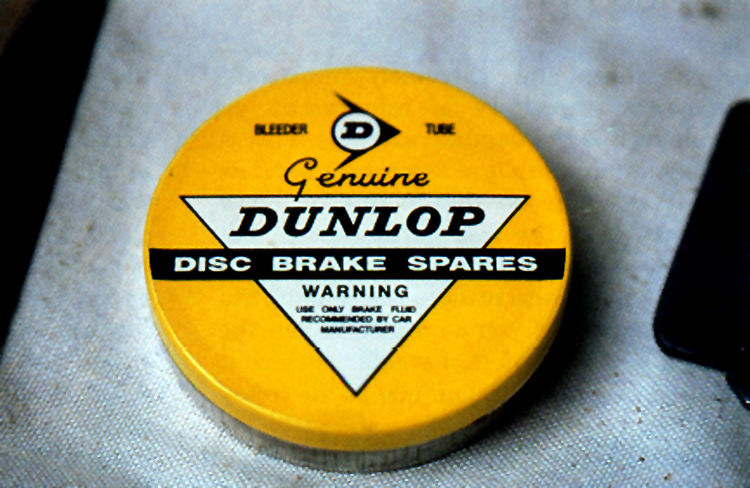
Obtaining the correct spare parts – in this instance a brake bleed pipe in its original tin – is a very real asset.
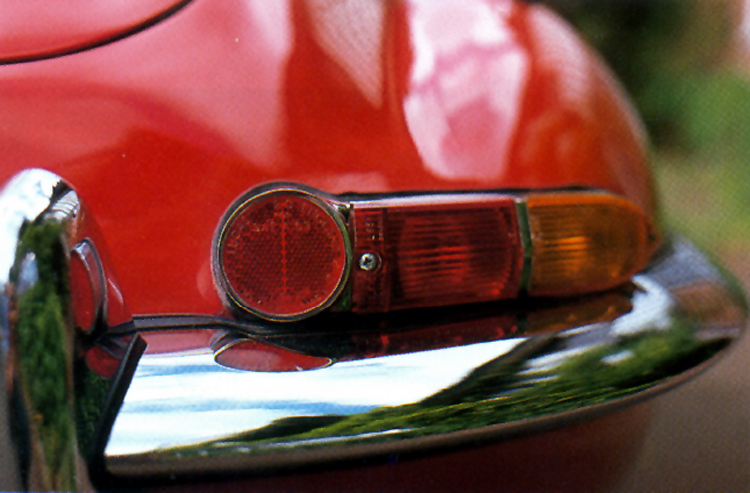
Rear tail-light clusters of the Jaguar E-type.
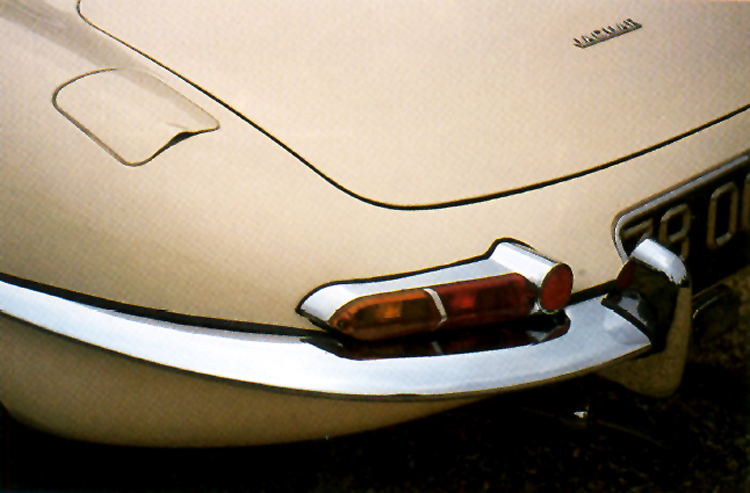
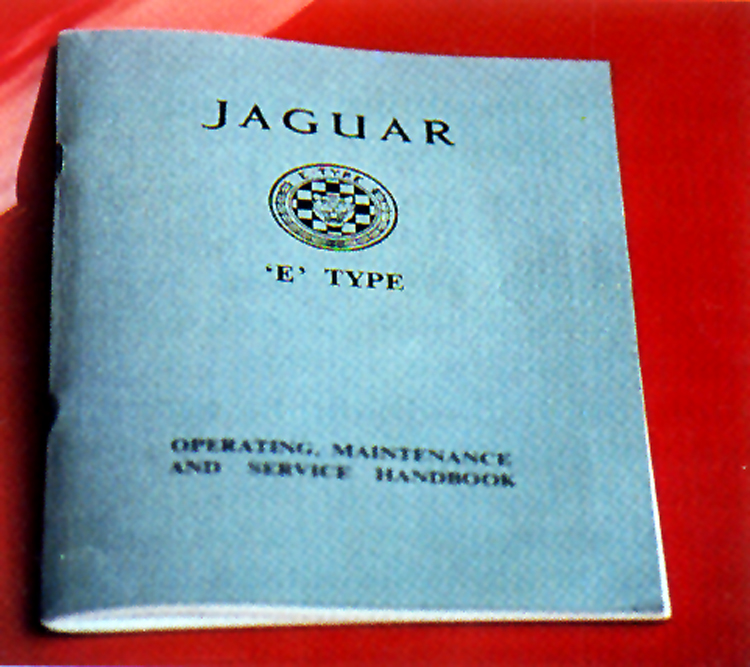
You may be lucky and obtain an original E-type handbook but, like the brochure, modern reproductions are available.
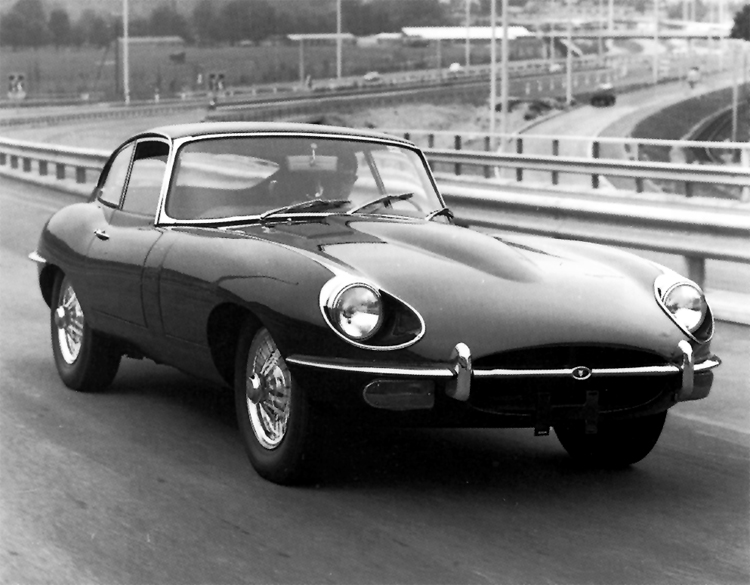
The E-type is a pleasure to drive, whether in the city …
After the war came the change of the company’s name from SS to Jaguar and Rankin became fully occupied with corporate affairs, so the club lapsed. It was not until 1955 that it was reactivated, due to the persistence of XK120 owner Raymond Play-ford, who wrote to the motoring press, suggesting a club for Jaguar owners. The inaugural meeting of the Jaguar Drivers’ Club was held in May 1956 but the fur really began to fly when the presidency was offered to the recently knighted Sir William Lyons and the factory responded by forbidding the use of the Jaguar name in the club’s title. The SS Car Club debacle obviously still rankled! But after lengthy negotiations, the JDC agreed to the presence of two factory representatives on its board of management, an allocation that still continues to this day.
Sir William Lyons subsequently accepted the club’s presidency and became a frequent attender at many of its events, much to the delight of the membership. Although initially XK owners predominated, as the club has grown it has opened to owners of any SS or Jaguar car of any age. The individual models have their own registers (there are seven in all within the club) and the E-type one, which caters both for the six-cylinder and V12-engined cars, is the largest within the club.
Other advantages of membership include Jaguar Driver, a high quality monthly magazine containing technical information and a vast range of spares and services. There is advice from a technical expert, as well as a ‘find-a-parts’ scheme for particularly elusive spares. Monthly pub meetings are held. Forty-three of these meetings are spread throughout the country so there is bound to be one near you. The big event of the year is National Day, usually held at a stately home, with SSs, Jaguars and, in particular E-types, as far as the eye can see! If you’re interested in joining the JDC, then write to:
The General Secretary,
Jaguar Drivers’ Club,
18 Stuart Street,
Luton LU1 2SL.
Up until 1985 the Jaguar Drivers’ Club was the country’s only national Jaguar club but, that year, there was a schism within the organisation and the outcome was the Jaguar Enthusiasts’ Club (JEC) which today has about 6,000 members. Like the JDC, the Jaguar Enthusiasts’ Club caters for all SS and Jaguar models. The club offers a similar range of services, including a club insurance scheme, free technical advice, Jaguar Enthusiast, a monthly club magazine, along with a booklet of Specialist Services available to Jaguar owners. In addition, most of the Jaguar book titles are available and, as far as E-type owners are concerned, this includes 3.8, 4.2 and V12 workshop manuals, along with the respective parts catalogues.
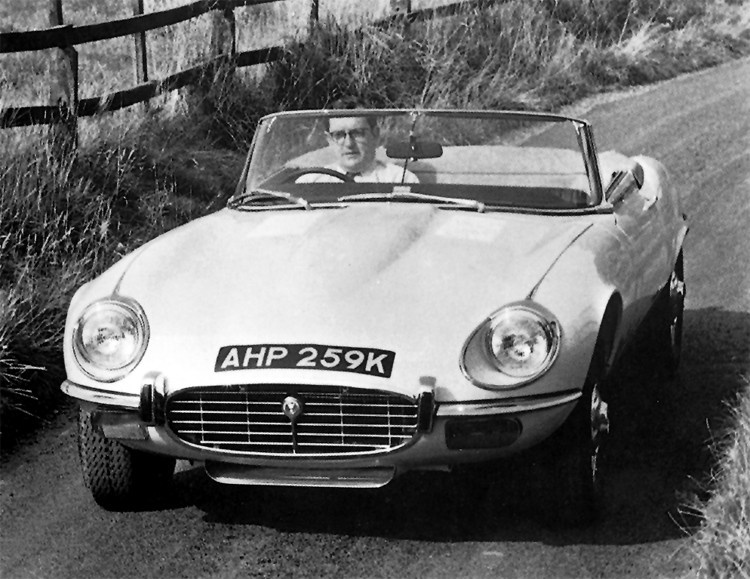
… or in the country.
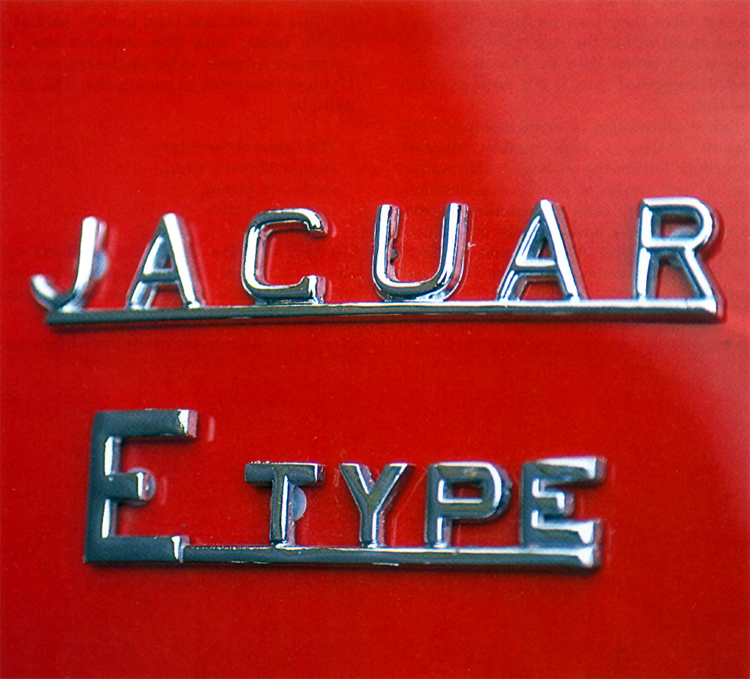
Such all-important items as this badge on the rear of a 3.8 are available in replica form.
There are no registers for individual models within the JEC but one of its most popular services is a Special Tool Department, aimed at those enthusiasts maintaining or restoring their own cars. E-type owners will be interested to know that they can buy such useful aids to XK engine renovation as a crankshaft rear main bearing sizing tool, which also applies to the V12 unit. Then there is a timing chain adjuster, the camshaft setting plate, valve spring compressor and a valve gear storage board, particularly helpful if you’re undertaking a decoke. A useful engine-lifting bracket is aimed for use on XK engines not fitted with lifting brackets. Specially manufactured spare parts are also available and although these mostly relate to the Mark II saloons which are so popular in the club, there is an E-type strapping kit used for securing the wiring loom to the front frame work or for containing the wires to the element of the heated rear window, if one is fitted, on the fixed-head coupe.

If you want to join the Jaguar Enthusiasts Club, write to:
Lynn and Graham Searle,
Sherborne,
Mead Road,
Stoke Gifford,
Bristol BS12 6TS
In 1988 came yet another organisation, the Jaguar Car Club (JCC), and I can do no better than to quote from the club’s application form, as it clearly sets down its services and objectives:
‘Our club was founded at the beginning of 1988 with 100 Founder Members, at the initiative of a number of senior Jaguar owners. The need was felt for a “motoring” Jaguar car club, which would be strongly orientated towards using Jaguar models of all types and would be particularly active in racing, sprint and rally competition events. Above all, it would be a friendly organisation, where size would be of secondary consideration.’
The JCC publishes a quarterly magazine, Jaguar World, along with a monthly newsletter. It organises a full competition programme of race meetings, hill climbs, sprints and rallies as well as social events. The club does not stock spare parts but can invariably give helpful advice on where to get them.
The membership secretary of the Jaguar Car Club is:
Richard Pugh,
19, Eldorado Crescent,
Cheltenham GL50 2PY.
Of course, the vast majority of E-types were exported to America and this is reflected by the forty or so Jaguar clubs there. These belong to the works supported Jaguar Clubs of North America which can be contacted at:
600 Willow Tree Road,
Leonia,
New Jersey 07605,
USA.
There are also clubs, the world over, which cater for Jaguars of all ages, which naturally include the E-type. There are five or so Down Under in Australia and Switzerland boasts no less than four! European countries, such as France, Germany, Italy, Belgium and Holland all possess Jaguar clubs.
Finally, a word about what is essentially a club activity that has latterly cropped up in this book: the concours, or to give it its full name, the concours d’élégance. This is essentially a gathering of cars, which are then judged by a team of experts, who will probably have broken the car down into four principal divisions: bodywork including boot, engine, interior and underside. They will be evaluating the car from a standpoint of its condition and originality on the day. This means that the judging team will not be over-impressed by a car, the engine of which has been burnished with a frenzy usually associated with an army kit inspection! Similarly the car which has parts unnecessarily plated will be penalised. The criteria is that it should most closely resemble the state in which it left the factory and, as I mentioned earlier, if you are a 3.8-litre owner, this means having the original Dunlop servo, rather than the improved Lockheed one which was introduced on the 4.2.
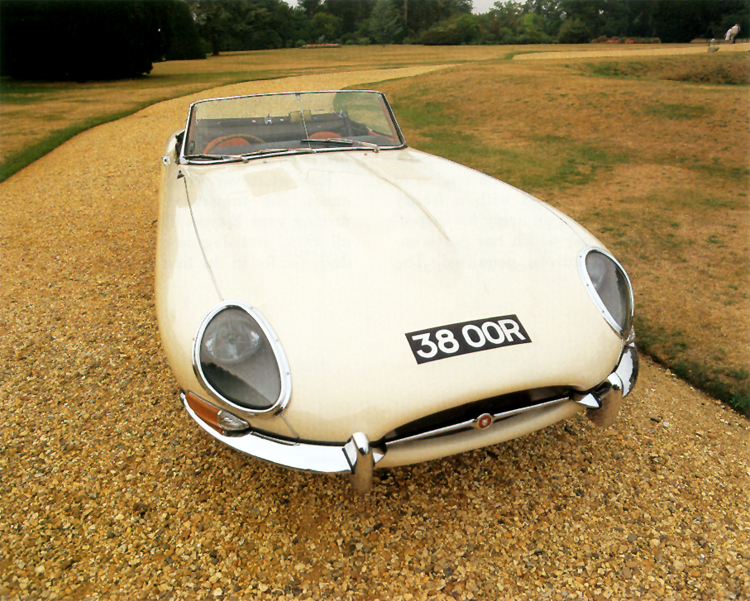
But whatever your competitive preferences, the important thing is to enjoy driving your E-type. That is, after all what all cars, and Jaguars in particular, were designed for in the first place.